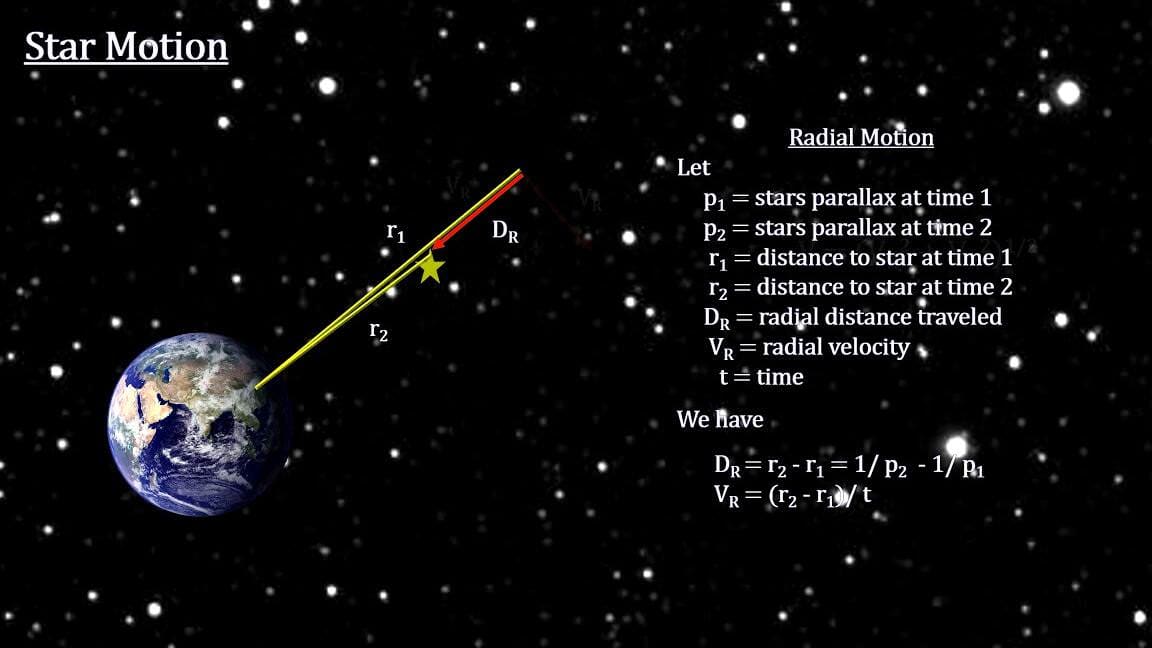
The Sun, located at an average distance of 1 astronomical unit from Earth (about 150 million kilometers), is the nearest star to our planet. It takes around 8 minutes for the sunlight to reach Earth. What sets the Sun apart is that it can be seen by an observer on Earth even during daylight hours, unlike most other nearby celestial objects which are only visible at night.
Out of the 14 objects that are closest to an observer on Earth, only the largest object in the Centauri constellation and the brightest star in the night sky, Sirius, can be seen without the need for a telescope or binoculars.
Within a radius of 10 pc, there are no neutron stars or black holes present
A neutron star is known to be one of the most dense masses of matter in the entire universe. However, there is a maximum limit to their mass. If this limit is exceeded, the neutron star will collapse, ultimately resulting in the formation of a black hole. (ESO / Luis Calzada)
To be honest, you would have to venture further in order to come across any of these objects. Back in 2007, astronomers made the discovery of an object known as 1RXS J141256.0 + 792204, which was given the nickname “Culvera” and identified as a neutron star.
Located 617 light-years from Earth, this celestial body is currently recognized as the nearest known companion to a neutron star. On the other hand, if we aim to reach the closest identified black hole, we would have to embark on a journey spanning over 3000 light years and head towards A0620-00 (also known as V616 Unicorn or Nova Mon 1975).
Out of the 316 star systems discovered within a range of 10 pc, none of them have been found to harbor black holes or neutron stars. These extraordinary objects are indeed quite scarce, particularly in the region of our galaxy where we reside.
The Alpha Centauri star system
Located at an average distance of 4.37 light years from us, Alpha Centauri is a remarkable triple star system. Approximately 4.55 light years away, we find two of its three components: yellow dwarfs that bear a striking resemblance to our very own Sun. These yellow dwarfs are visible to the naked eye from Earth and exhibit a fascinating pattern of movement, as they orbit around a common center point, completing a full revolution in just 79 Earth years.
The third star in the Alpha Centauri system is known as Proxima, a red dwarf that is closer to us (4.2 light years, to be precise). However, Proxima can only be observed using astronomical equipment. Despite its smaller size and mass, Proxima moves at a slower pace compared to its neighboring stars, taking approximately 500,000 years to complete a full revolution around the center of star formation. Although the exact nature of Proxima’s relationship to this triple luminary has yet to be definitively proven, it still remains an intriguing component of the Alpha Centauri system.
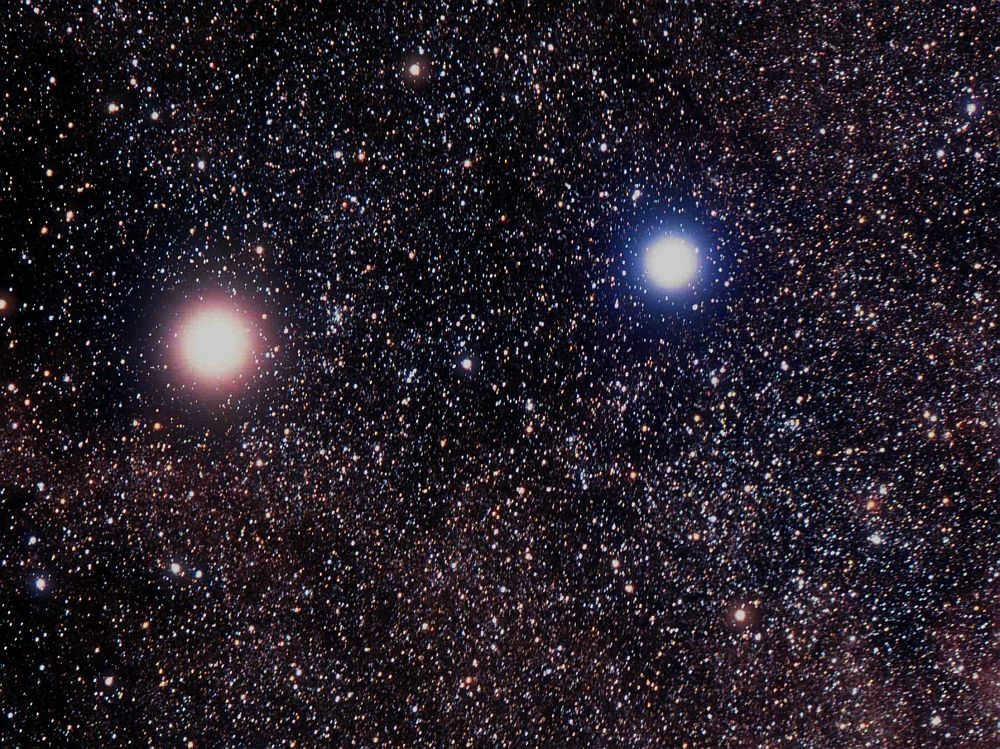
What is the method for measuring distances to stars?
Parallax is the technique employed to calculate the distance of stars from Earth. How does it work? Imagine reaching out and touching a faraway object. Now, close one eye and then the other. You’ll notice that the object appears to move. That’s parallax.

Graphical display with parallax
The distance to the star can be calculated by observing our planet in one of its orbits (during the summer), then waiting for 6 months until it is on the opposite side and measuring again. The angle relative to the other object can then be measured. This method can be applied to any object within a range of 100 light years.
Within a distance of 17 light years from the system, there are a total of 45 stars. It is estimated that there could be up to 200 billion stars in a galaxy. However, some stars are so faint that they cannot be detected.
So far, 56 exoplanets within a 10 parsec radius have been discovered
The TRAPPIST-1 system stands out in comparison to our solar system; it is possible that all seven TRAPPIST-1 planets are located within the orbit of Mercury. By providing details on the planets’ mass, radius, atmospheric composition, and orbital characteristics, as well as information about our star, an advanced civilization would be able to identify our solar system from a distance. (NASA/Jet Propulsion Laboratory-Caltech)
In this region, there are more than 400 known stars, but only 26 of them have planetary systems. The previous “record holder” was Gliese 892 (HR 8832, HD 219134, also known as Gliese 892) with six confirmed planets and one potential candidate.
The nearest star, Proxima Centauri, is just 4.2 light-years away, while TRAPPIST-1 is a bit farther at 40 light-years and more than 12 parsecs.
One of the primary obstacles facing astronomers is the quest to discover exoplanets that pass in front of these celestial bodies. Once these planets are located, identified, and analyzed, upcoming space telescopes like the James Webb and the Thirty Meter Telescope (TMT), which are currently being built on Earth, will have the capability to observe them. This will mark the first instance in human history where we will truly have an opportunity to examine atmospheres and potentially detect indications of life on other potentially habitable planets orbiting distant stars.
Luman 16
Situated in the Sails constellation, Luhman 16 A and Luhman 16 B are a pair of stars that were discovered by the renowned American astronomer Kevin Luhman in 2013. These brown dwarfs hold the fifth position in terms of proximity to Earth, being approximately 5.98 light-years away. Interestingly, the distance between these two stars is about 3 astronomical units. As of now, it remains unknown whether any planets accompany these celestial bodies.
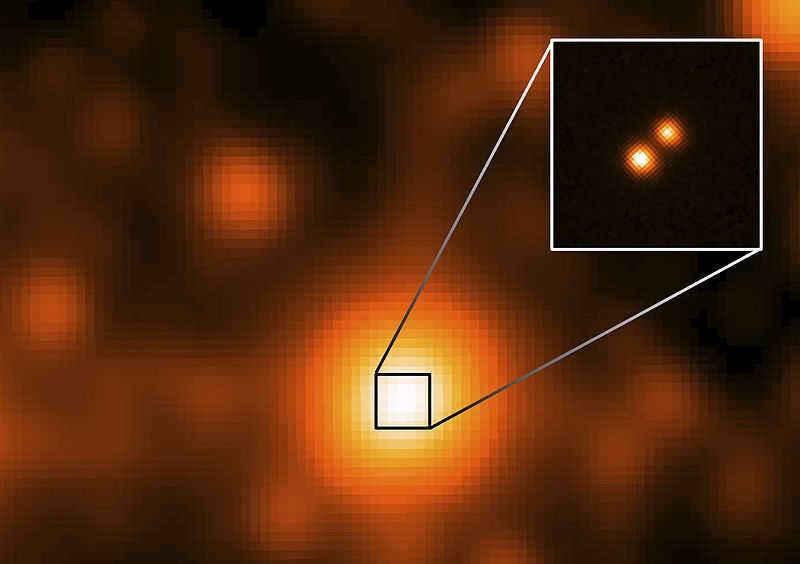
Multiple star systems are prevalent
While most stars in the night sky may appear as individual bright spots, a significant number of them actually exist in multistar systems. Among these, Castor holds the distinction of having the highest number of stars within a 25 parsec radius (NASA / JPL-Caltech / Caetano Julio).
While it is relatively easy to find single Sun-like stars within a 10 parsec distance, it is also quite common to come across double, triple, and even more complex multiple star systems. The closest star system, Alpha Centauri, is triple in nature, and there are also two “fives” – GJ0644 and Alpha Libra.
In addition to the 316 known systems, over 100 additional stars have been recently identified as being part of these systems. However, the RECONS project has been striving to go even further. Over the past decade, their search has expanded to cover a 25 parsec radius. As of 2014, the project team has made the following discoveries:
- 1,533 single star systems;
- 509 double systems;
- 102 triple systems;
- There are 19 systems consisting of four parts;
- There are 4 systems consisting of five parts; and even 1 system consisting of six parts.
This system with six elements, called Castor, has been known since ancient times and is the 24th brightest star system in the night sky. It is located at a distance of only 51 light years from us, which is more than 10 parsecs but just over 15.7.
Fainter systems with the lowest mass may still remain undetected, even if they are within a distance of only ten parsecs. There is also no guarantee that the images we observe accurately represent objects and phenomena in the Galaxy and the Universe. However, we are very close to understanding where and how to search for missing stars.
Scientists working at RECONS have confidently stated that they have discovered almost all systems within a distance of 10 parsecs. Based on their findings, the Sun is not a typical star, but rather more massive than about 95% of the stars in the Universe.
In the near future, we will have the ability to confidently answer questions about planets and the existence of life on them, rather than relying on speculation. This is an incredibly exciting time to venture into the vast cosmos, even beyond our own solar system.
The Distance to the Nearest Star
Utilizing the parallax method, astronomers have successfully determined the distance to the nearest star in terms of light-years. As previously mentioned, it is located 4,244 light-years away.
Unfortunately, space travel remains a mere dream for most individuals at present. However, it is possible that in the future, we will possess the capability to explore outer space just as we do our own skies. Currently, there is ongoing work, research, and the development of specialized equipment, among other endeavors. Nevertheless, the universe entices us with its enigmatic and boundless expanses.

A spacecraft floating in the vastness of space
However, if you were to envision traveling directly to Proxima Centauri at a speed of 100 km/h, such a journey would require nearly 50 million years. Clearly, this is an impossible feat.
Up until now, scientists have only been able to calculate the number of years it would take for a beam of light to reach the nearest star. It turns out that the distance to Proxima Centauri, which is 4.2 light-years away, is equivalent to the span of the Sun’s beam.
Ross 154.
In 1925, an astronomer named Frank Ross from the United States made a remarkable discovery in the field of astrophysics. He identified a star that exhibited active flaring, which was then added to the star catalog for further study.
This particular star, known as Ross 154, is located in the constellation Sagittarius and is a close neighbor of Barnard’s star. While Barnard’s star travels through the universe on its own, Ross 154 stands out for its unique behavior.
One of the most intriguing aspects of Ross 154 is its regular fluctuations in brightness, which occur for a few minutes at a time. Additionally, the star also experiences uniform dimming. These variations in brightness make Ross 154 a fascinating subject for astronomers.
Further investigations have revealed that Ross 154 emits significantly more X-ray radiation than the central star in our solar system. This high level of radiation sets Ross 154 apart from other stars and adds to its mystique. However, due to its low overall brightness, Ross 154 can only be observed through a telescope.
The Andromeda Nebula is currently the most distant object in the universe that has been discovered so far (without the aid of special optical devices). Its brightness is approximately one quarter of that of our own galaxy. According to astronomers’ calculations, the farthest star in this galaxy from Earth is located at a staggering distance of 2 million light years. This is truly remarkable because when we observe it, we are actually looking back in time to how it appeared 2 million years ago. It’s fascinating to be able to glimpse into the cosmic past!
On the other hand, the closest galaxy to us is a dwarf galaxy that belongs to the constellation Sagittarius. It is situated so close to our Milky Way that our galaxy essentially “swallows” it up. However, it is worth noting that it would still take a whopping 80,000 light years to reach this dwarf galaxy. As for the Magellanic Cloud, it is not particularly notable as it is located nearly 170 parsecs behind us.
NASA reports that there are an additional 45 stars situated 17 parsecs away from the Sun. The Milky Way as a complete entity harbors in excess of 200 billion stars. However, a number of these stars emit such faint light that they are nearly imperceptible without the aid of specialized equipment. It is conceivable that with the most recent advancements in technology, researchers may be able to identify stars that are even more proximal to our own solar system.
Barnard
Barnard is one of the closest luminaries to our planet. It is part of the Serpentine system and is classified as a red dwarf. Unlike other stars, Barnard does not emit much brightness and is not easily visible to the naked eye.
Discovered in 1916, the star was named after its discoverer. Barnard is relatively small in size and has a mass smaller than that of the Sun, measuring only 0.17 times its diameter.
What sets Barnard apart is its remarkable mobility. Scientists predict that in the near future, this star will actually be closer to Earth than Proxima, another nearby star, due to its incredible speed. Barnard travels at an astonishing speed of 10.36 yards per second, making it the fastest known star in the universe.
Leithen 726-8
Situated 8.73 light-years away from planet Earth, Leithen 726-8 seamlessly merges with the constellation of China. Back in 1948, Jak Leiten stumbled upon this star system while gazing at the heavens.
Consisting of two blazing red dwarf stars, their combined mass amounts to a mere 0.12 times that of our Sun. These celestial bodies orbit around each other, completing a full revolution every 26.5 years.
During 1952, a remarkable event occurred on Leithen 726-8 B (also known as Kit UV). Within a span of 20 seconds, the star’s brightness multiplied seventy-fivefold!
The Nearest Stars to Earth in the Past and Future
Stars are constantly in motion, even if we may not notice it in our lifetime. Has Proxima Centauri always been the closest star to the Sun, and how long will this remain the case?
For the past 32,000 years, Proxima Centauri has indeed been the closest star to the Sun, and it will continue to hold this position for a significant amount of time. However, in 33,000 years, the honor of being the closest star to the Sun will be bestowed upon Ross 248, a solitary star located in the Andromeda constellation. Presently, Ross 248 is positioned 10.3 light-years away from the Sun, making it 2.5 times larger than Proxima Centauri as it exists today.
The star Lalande 21185 is one of the closest stars to Earth, ranking among the top ten in proximity. The credit for its discovery in 1801 goes to the French astronomer Joseph Lalande. Situated at a distance of 8.29 light years from our planet, Lalande 21185 is classified as a red dwarf. Ongoing studies have revealed that this star is a prominent member of the Big Dipper constellation, emitting a radiant glow. However, astronomers have yet to identify any orbiting planets around Lalande 21185.
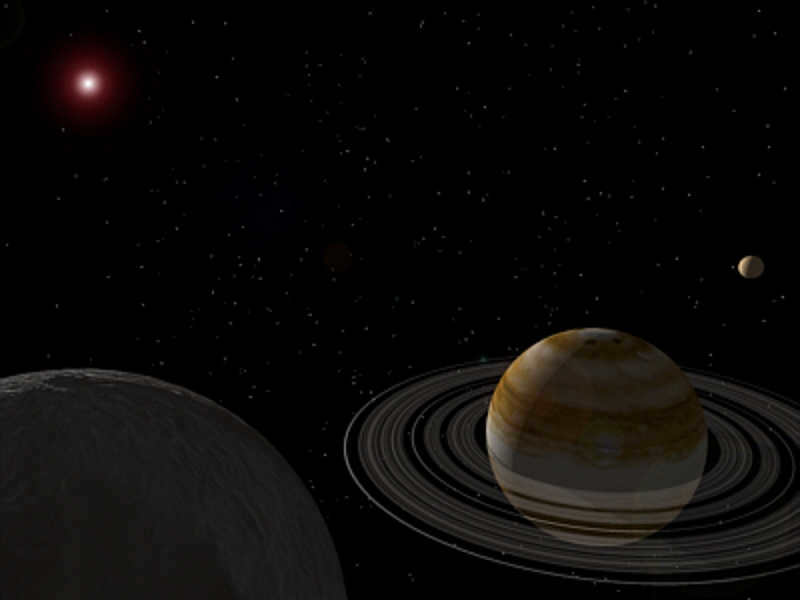
Unique Features of Alpha Centauri, the Nearest Star System to Earth
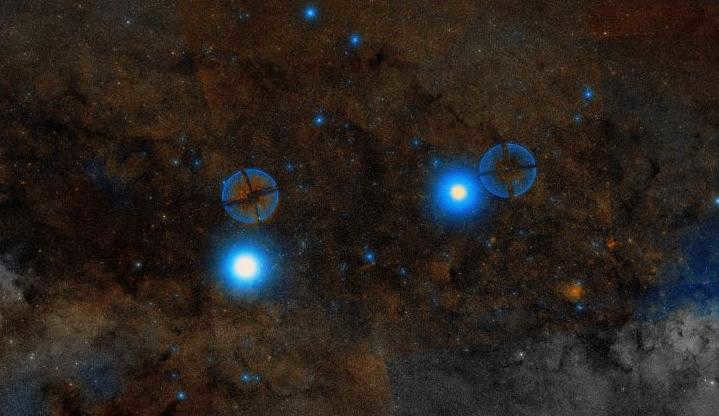
The stars Alpha Centauri (left) and Hadar (right) set against the backdrop of the Milky Way
The distance between our planet and Proxima Centauri, which is one of the three elements in the Alpha Centauri star system, is the shortest at 4.22 light-years. This star, apart from the Sun, is the closest to Earth and has notable differences from its neighboring stars. Proxima Centauri is classified as a red dwarf, belonging to the spectral class M, and its mass and radius are both less than 0.1 times that of the Sun. Due to its low temperature of 3042 K, it emits minimal energy and cannot be observed with the naked eye. Its discovery took place in 1915. The star’s brightness is periodically enhanced by active flares. Proxima Centauri and the rest of its natural system are separated by a significant distance of 0.21 light-years, making it uncertain whether it is in orbit. If Proxima Centauri is indeed orbiting a binary star, its total period would exceed 500,000 years. Despite extensive searches, no exoplanets have been found near this star, leading scientists to conclude that large planets do not exist in its orbit.

Alpha Centauri B
The other two parts of the system, Alpha Centauri A and Alpha Centauri B, are closely linked to each other. They can be observed as stars from Earth. The system is located 4.36 light-years away from us. These objects are categorized as G and K spectral classes, which means they are yellow and orange dwarfs. In terms of characteristics and temperature, they are similar to the Sun, but they are older, with an age of up to 6 billion years. The Centauri A component is larger than its counterpart, with a mass of 1.1 and a diameter of 1.2 times that of the Sun. The estimated values for Centauri B are 0.9 and 0.86, respectively. These celestial bodies revolve around each other in an elliptical orbit, with an inclination angle of 79.2 degrees and a period of 79.9 years.
Exoplanets in the Alpha Centauri System

The Alpha Centauri B star is known to have planets orbiting around it.
The ongoing search for planets in the nearest star system is a regular endeavor. Special attention is given to yellow and red dwarf stars. In order to locate satellites around distant objects, scientists must measure the radial velocity of stars using spectrographs that are mounted on the most advanced telescopes. The primary investigation was carried out by two independent groups, one from California and the other from Geneva, both focusing on a select number of objects, including Alpha Centauri. European astronomers achieved positive results, announcing in 2012 the discovery of a planet named Alpha Centauri B b after analyzing an extensive amount of data. The presence of a distinct signal at intervals of 3.2 days indicated the existence of a celestial body with a mass equivalent to 1.13 times that of Earth. This exoplanet takes the form of a sphere that reaches temperatures of 1200 degrees Celsius. Its close proximity to the star’s surface allows for such high temperatures. The planet completes its orbit in just over three Earth days. Although it does not fall within the habitable zone where life could potentially emerge, its size in relation to the star is estimated to be between 0.5 and 0.9 astronomical units.
A compilation of the nearest stars to Earth
Even amidst the stars in close proximity to our Sun:
- Barnard’s star, a red dwarf situated 6 light-years away in the constellation of Ophiuchus;
- The Luhman-16 binary star system consisting of two brown dwarfs, located at a distance that light traverses in 6.5 years;
- The star Wise-0855, which was discovered in 2014 by the Wise Infrared Orbiting Telescope and given its name, is a frigid sub-brown dwarf with a surface temperature of -30 °C, situated 7.3 light-years away;
- Wolf-359, a red dwarf that is still not thoroughly studied, located at approximately the same distance from our Sun;
- The sizable red dwarf Laland-21185 (also known as Gliese-411) from the constellation of Ursa Major, situated 8.3 light-years away;
- Sirius, comprised of two distinct luminaries, Alpha Canis Majoris, which is positioned 8.5 light years away;
- Leiten-726-8, an 8.7 light-year distant double red dwarf that pulsates, located away from the Sun;
- Ross-154, a young red dwarf situated in the Sagittarius constellation (taking light approximately 9.7 years to travel from it to us).
Not included in this list is another significant object: the yellowish-white raccoon, Alpha Minor Dog, which is situated 11.4 light-years away.
Far beyond our planet are the twelfth brightest celestial body, Altair, and the star Ross-614, both mentioned in Ivan Efremov’s novel “The Andromeda Nebula.”
Brightest stars outside of our solar system
Proxima Centauri
Part of a trinary system located approximately four light-years away from our planet, Proxima Centauri is scientifically referred to as a parsec. Its name, derived from Latin, translates to “nearer,” indicating the ancient recognition of its distinctive characteristics and spatial proximity.
Although four parsecs may seem relatively insignificant in the vastness of the universe, it is a considerable distance for humans. It would take more than a single generation to traverse the immense expanse to reach the outer limits of Proxima Centauri.
Among the vast expanse of stars, this celestial object remains elusive to even the most observant stargazers. Its presence can only be unveiled in the night sky with the aid of a powerful telescope. Dimmer than the Sun by a magnitude of approximately 150, it radiates a feeble glow. Moreover, its dimensions are noticeably smaller, and its surface temperature is merely half that of our own star. Scientists classify this enigmatic entity as a brown dwarf and are skeptical about the likelihood of discovering any planets in its vicinity. Consequently, voyaging to this distant location would serve no purpose.
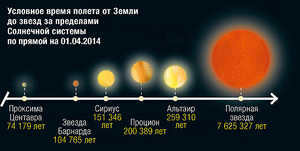
Alpha Centauri: A Unique Triple System
Alpha Centauri, a triple star system relatively close to Earth, is an object of great interest due to its rarity in the universe. What sets it apart is the intricate orbits of its stars, which sometimes even result in one star “consuming” its neighbor.
There is another brown dwarf named WISE 0855-0714, which is thought to be an orphan planet and is located in the Hydra constellation. Scientific research suggests that it is approximately 7.27 light years away.
Furthermore, this celestial body is renowned for being the coldest object of its kind. The WISE 0855-0714 space telescope detected it in 2013.
The closest star of type O or B is located 79 light years away
The Orion constellation is home to a vast complex of molecular clouds and some of the most luminous stars in the sky. While these stars are awe-inspiring, they are all located at distances greater than 10 parsecs. They appear bright because they emit a tremendous amount of light. Only 51 stars within a 10 parsec radius are visible to the naked eye. (Rogelio Bernal Andreo).
This star is known as Regulus, situated at the “fainter” end of the Class B spectrum. It is the brightest star in the Leo constellation and the 21st brightest star in the entire sky. The scarcity of O and B class stars can be attributed to their high mass and delicate nature.
Once you venture away from the region where star formation occurs (currently between the spiral arms), you will only find relatively old stars in close proximity. Regulus, which falls into the lower range of the B class, has been shining for approximately 1 billion years.
Despite the limited time remaining in his life cycle, he continues to exist. To locate him, you must venture beyond the 10 parsec boundary, nearly 25 parsecs.
WISE 0855-0714.
In 2014, Kevin Luhman discovered the star that is the sixth closest to Earth. It was observed using the WISE telescope, which is now named after it. The brown dwarf emits faint radiation, rendering it undetectable to the naked eye. It is situated 7.27 light-years away from our planet. Astronomers have determined that WISE 0855-0714 is the coldest star in space that has been extensively investigated.
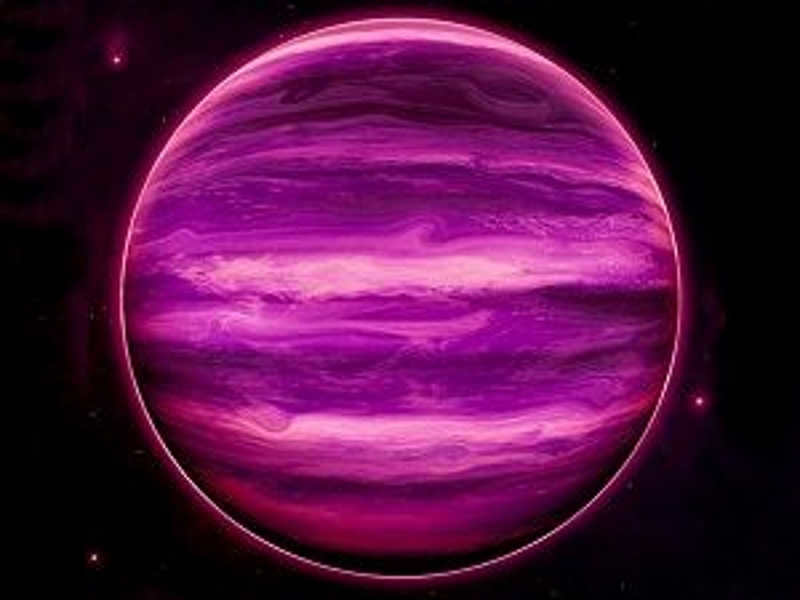
Wolf 359
Wolf 359 is the nearest star to the Sun, apart from Alpha Centauri. It can be found in the Leo constellation. This solitary star is located 7.80 light-years away from our Solar System and is one of the closest luminaries to it.
Wolf 359 is a dwarf star, with a mass ranging from 0.09 to 0.13 M and a radius of 0.16 to 0.19. It is dimmer than Proxima. This star was discovered through astrophotography in 1918 and was named after its discoverer. The nearest object to Wolf 359 is Ross 128, which is located at a distance of 3.79 sv years.
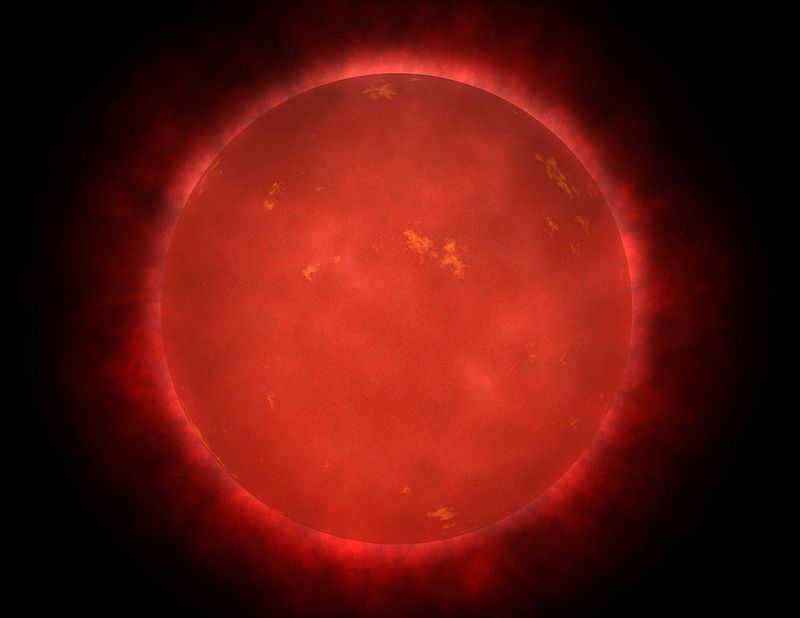
Laland 21185 viewed from an artist’s perspective.
Sirius AB
The Earth is orbited by two stars, Sirius A and Sirius B, which rank ninth in brightness. Prior to 1844, it was believed to be a single star until Friedrich Bessel proposed that the two celestial bodies were in fact merging. This theory was confirmed when Alvan Clarke discovered the star Sirius V in 1862.
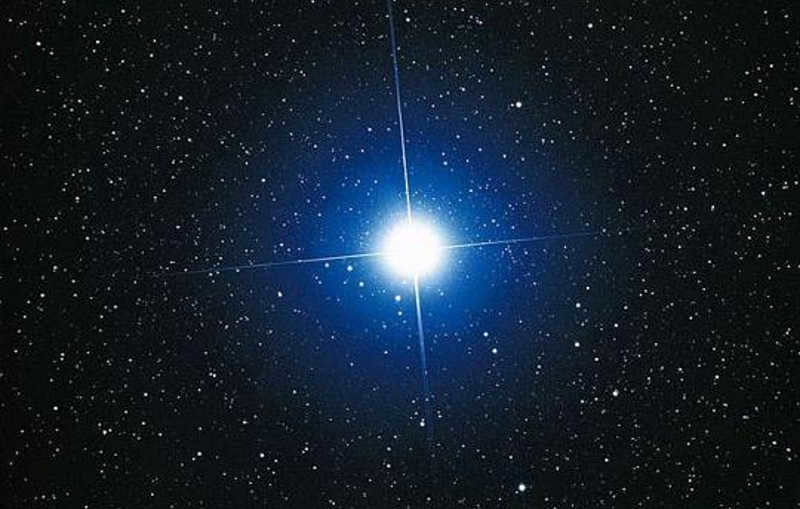
Sirius A is classified as a white dwarf, while Sirius B is categorized as a yellow dwarf. These two stars are located at a distance of approximately 8.58 light years from our planet, Earth. The magnificent double star system known as Sirius AB can be admired in the night sky. It is visible from various parts of the world, excluding the northernmost region.
The nearest star to Earth in the northern hemisphere happens to be Barnard’s Star, which is a red dwarf located in the constellation of Ophiuchus. However, it is quite dim and cannot be seen with the naked eye. If we consider only those stars that can be observed without the aid of advanced technology, the closest one to us is Sirius, which is located about 8.6 light-years away. Interestingly, Sirius is twice as large and massive as our very own Sun.
The occurrence of bright stars is extremely rare, while the most common stars are those with the faintest luminosity
(In the present day), the Morgan-Keenan system is used to classify stars based on their spectral characteristics. This system categorizes stars into different classes based on their temperature, measured in degrees Kelvin. The majority of stars in the modern era are classified as M-class stars, while there is only one known O or B class star within a distance of 25 parsecs. Our Sun is classified as a G-class star. (Source: Wikimedia / LucasVB / E. Siegel)
Stars are classified into seven types: O, B, A, F, G, K, and M, arranged in descending order from the bluest and hottest to the reddest and coolest.
Stars undergo nuclear fusion in their cores, converting hydrogen into helium (and sometimes heavier elements). Brown dwarfs are stars that are not massive enough to reach the classification of M-class stars and are often overlooked.
Whites are the remaining remnants of stars, like the Sun, that have already completed their life cycles by burning through all of their nuclear fuel. The 316 systems that have been discovered so far are mainly composed of stars in the following proportions:
- 0 – Class O (0%);
- 0 – Class B (0%);
- 4 – Class A (1.3%);
- 8 – Class F (2.5%);
- 19, including the Sun, are Class G (6.0%);
- 29 – Class K (9.2%);
- 222 – Class M (66.5%);
- 37 – brown dwarfs (11.7%);
- 9 – white dwarfs (2.8%).
This indicates that a staggering 82% of nearby stellar systems, composed of real stars (O, B, A, F, G, K, and M), are “populated” by Class M red dwarfs. Our Sun appears to be quite unique in this context.
Solar Body
The Sun, which is the nearest star to our planet, has a size of 1.391 million km and makes up approximately 98% of the total mass in the solar system. The star’s proximity to Earth varies depending on its location, but on average it is about 149.6 million kilometers away. It takes just 8 minutes and 19 seconds for light to travel from the Sun to reach us on Earth.
Proxima Centauri: The Nearest Star to Earth
Proxima Centauri, a red dwarf, is not only part of the Alpha Centauri triple star system but also happens to be the closest star to Earth. However, it is located at a considerable distance from the system’s two primary and largest components, measuring approximately 15,000 astronomical units or 0.21 light-years. Interestingly, this distance is only about 20 times smaller than the distance between Earth and its neighboring star.
Due to its significant distance from the system’s center, Proxima Centauri undergoes a revolution in its orbit every 500,000 years. Currently, it is positioned in front of Alpha Centauri, making Proxima Centauri the nearest star to Earth for the next millennium. Eventually, it will transition to the far side of its orbit, and Alpha Centauri, specifically its A and B components, will become the closest stars.
Proxima Centauri, a red dwarf, is the star closest to Earth within the triple Alpha Centauri system.
Despite being the closest star to us, it is quite faint. Proxima is seven times smaller and lighter than our Sun. Even if observed from a planet in the Alpha Centauri system (if there is one), Proxima would still be seen as a faint 5th magnitude star in the night sky.

If we were in close proximity to the main stars of the Alpha Centauri system, Proxima Centauri would be visible as a dim star (indicated by the arrow) with a reddish hue.
By the way, Proxima Centauri has a planet located within its habitable zone, and its existence was confirmed by the South European Observatory in 2016. This planet is relatively small in size and bears similarities to Earth, being situated at a distance of 0.5 astronomical units from its host star.
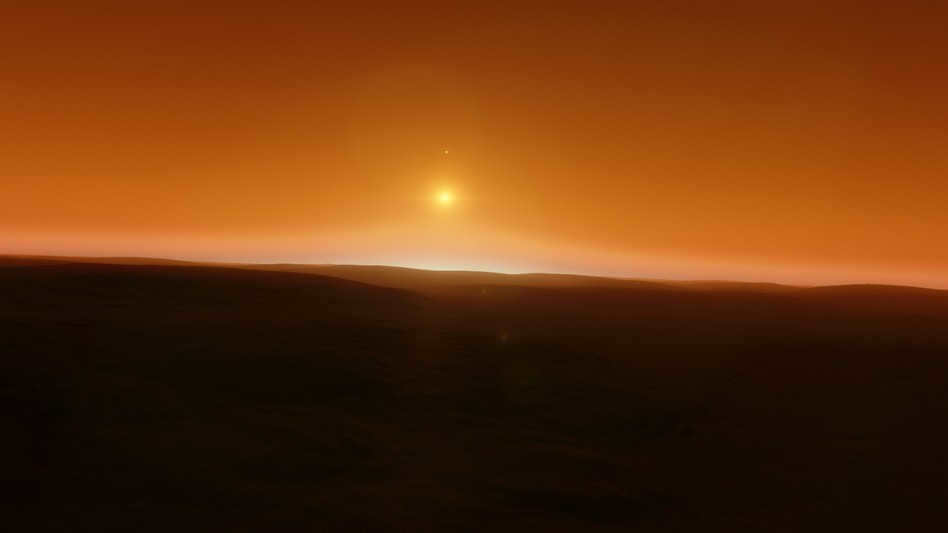

Proxima Centauri, which is the closest star to Earth, has the ability to observe the sky of one of its planets. This information was obtained from a screenshot taken from the Space Engine Universe Simulator.
However, the possibility of life existing in this star system is a topic of much debate. Proxima Centauri is an unstable red dwarf that experiences periodic flares, resulting in a dramatic increase in radiation levels, including in the X-ray range. Despite these challenges, if there are oceans present, life may have found a way to adapt and survive. Given that the star is nearly 5 billion years old, the potential for various forms of life cannot be ruled out.
Furthermore, in 2019, news broke of an additional celestial body found in close proximity to Proxima Centauri, approximately 1.5 astronomical units away from the central star. This newly discovered planet boasts a mass at least six times that of Earth and maintains an incredibly frigid temperature of only 39 K. However, it is crucial to note that the existence of this newfound planet remains unverified and necessitates further investigation.
Moreover, it is widely believed that Proxima Centauri harbors an asteroid belt within its planetary system. While there is some supporting evidence for this claim, extensive research is still required to confirm its existence and understand its characteristics in greater detail.

Before that, as mentioned earlier, Digges divided the stars from the sphere and scattered them throughout the cosmos: “This celestial realm stretches infinitely in every direction and is thus motionless. This heavenly abode is adorned with countless lights that shine eternally, surpassing our sun in both quality and quantity.”
The detection of a small yearly parallax would serve as a significant confirmation of the Copernican system. Additionally, it would enable the measurement of stellar distances. The parallax of a star is equivalent to the angle at which the Earth’s orbit radius is observed from the star’s location. It is also equal to half of the overall change in direction towards the star throughout a year.
If the parallactic angle amounts to 1 second of arc, the star is considered to be at a distance of 1 parsec (ragses). The name of this length unit encodes its definition (parallax = 1 second; raga Iah = 1 agsyes). One parsec (1 pc) corresponds to 206,265 radii of the Earth’s orbit.
Galileo’s Dialogue Explores the Detection and Confirmation of Earth’s Motion
In his Dialogue, Galileo devotes considerable attention to the detection and proof of the Earth’s motion. Similar to how we cannot feel the motion of a ship while on board, we cannot feel the Earth’s constant rotation until it encounters an obstacle that abruptly stops it, throwing us back to the stars. Salviati, the character expressing Galileo’s thoughts, describes this nightmarish scene. However, we can observe the stars and notice indications of the Earth’s movement, although none were noticed at the time. Salviati first examines the case where a star is positioned precisely on the ecliptic. If observed from a moving Earth, this star should exhibit a wobbling motion along the ecliptic over the course of a year, similar to the looping motion of a distant planet relative to the fixed stars. However, Salviati explains that such a motion of a star is extremely challenging to observe because one would need reference points located significantly farther away from that star. Furthermore, the effect completely disappears if all the stars are situated on the celestial sphere.
Nevertheless, the task becomes easier if the star is located far from the ecliptic. In this case, over the course of a year, the star will change its angular distance from the ecliptic, alternately “descending” and “rising”. The fixed plane of the ecliptic itself serves as the coordinate system in which angles can be measured.
Galileo also discusses the potential to observe the relative parallax of two stars at varying distances, which could serve as additional proof of the Earth’s annual motion. He proposes that not all stars are equidistant from us, and that certain stars may be “two or three” times farther away than others. If two stars of this nature were situated near each other, the nearer star could exhibit movement in relation to the more distant star, allowing astronomers to calculate this slight displacement. And while these calculations were eventually conducted, it took another two centuries for them to occur!
During this time, individuals made an effort to observe the motion of stars “up and down” through the utilization of Galileo’s ecliptic technique. Unfortunately, these endeavors proved to be futile (as it is exceedingly challenging to make precise angle measurements from the ecliptic in order to detect these shifts). However, while conducting these measurements, another highly significant phenomenon that alters the direction of stars was unexpectedly discovered. This unforeseen optical phenomenon was ultimately identified as the aberration of light.
A living creature became involved
Prior to the search for parallax, a living creature became involved. Specifically, around 1640, a spider spun its web inside the telescope belonging to William Gascoigne, an amateur astronomer from England. Gascoigne’s telescope was of the Keplerian type, where the lens creates an image inside the telescope, in front of the eyepiece. As a result, a section of the spider’s web was hanging at the focal plane and was clearly visible when Gascoigne looked through the eyepiece (not the spider itself!). This inspired Gascoigne to construct a measuring device for his telescope.
He stretched two thin strands of spider web in parallel at the focal plane, allowing him to adjust their distance by turning a screw. Over time, Gascoigne refined this thread micrometer to accurately measure small angles. It proved to be invaluable in measuring the subtle movements of stars.
Home ” Family ” The sun is the origin of light, warmth, and life on Earth. An outline for a lesson on the world around us with the topic “The sun is an origin of light and warmth on Earth” A star is composed of…
The Sun is an origin of light, warmth and life on Earth. An outline for a lesson on the world around the topic “The Sun is an origin of light and warmth on Earth” A star is composed of…
The sun — is a luminous sphere of gas 150 million kilometers away from the Earth. The Sun has a complex structure. The outer layer is an atmosphere consisting of three layers. The photosphere — is the lowest and thickest layer of the solar atmosphere, approximately 300 kilometers thick. The next layer — the chromosphere, 12,000 to 15,000 kilometers thick.
The solar corona, which is the outer envelope, has a shimmering white color and can reach several solar radii in height. It lacks distinct boundaries and its shape is constantly changing. The corona continuously releases its substance into interplanetary space, forming what is known as the solar wind. This solar wind is composed of protons (Hydrogen nuclei) and helium atoms.
The Sun has a radius of 700 thousand kilometers and a mass of 2 1030 kg. It contains a total of 72 chemical elements. The most abundant element is Hydrogen, followed by Helium, which together make up 98% of the Sun’s mass.
The Sun has been present in space for approximately 5 billion years and, based on astronomers’ calculations, will continue to exist for the same amount of time. The Sun’s energy is released through thermonuclear reactions.
There are often sudden bursts of energy called solar flares that can take hours to reach the Earth. These flares are accompanied by magnetic storms, which can cause strong and chaotic electrical currents in conductors, leading to disruptions in power grids and appliances. In seismically active areas, earthquakes can also occur.
During periods of increased solar activity, there is a growth in trees. At the same time, caracourts, locusts, and fleas breed more actively. Research has shown that high solar activity years are not only associated with epidemics like cholera, dysentery, and diphtheria, but also pandemics such as influenza and plague.
In humans, the nervous and cardiovascular systems are highly susceptible to fluctuations in solar activity. Even in individuals with good health, solar activity can lead to changes in motor responses, perception of time, diminished attention, and disrupted sleep patterns, all of which can impact professional performance. Additionally, solar activity can cause a decrease in white blood cell count and weaken the immune system, making the body more vulnerable to infectious diseases.
The solar system consists of the Sun, major and minor planets, comets, and other celestial bodies that orbit around it. It is the solar system.
A planet completes one revolution around the Sun in a year. The duration of a year on a planet is longer if it is farther away from the Sun (refer to the table).
Despite the fact that all planets orbit the Sun at varying speeds, they all move in the same direction. Every 84 years, there is a moment when all the planets align on the same line, which is known as the parade of the planets.
With the exception of Mercury and Venus, all the major planets possess satellites that revolve around them. The Earth has one satellite, the Moon, while Saturn has 17, Jupiter has 16, and Mars has 2. Additionally, there are numerous small planets that orbit around the Sun, including rocky bodies ranging in size from five to ten kilometers.
Both large and small planets maintain a relatively stable distance from the Sun. In contrast, comets have an orbit that takes them away from and then back towards the Sun. Furthermore, the Sun serves as the primary source of light and heat for Earth.
The planet Earth is situated at a distance from the Sun that allows water to exist in a liquid state. The unique combination of temperature, light, and the presence of water has enabled the formation and evolution of life on our planet.
As a result of sunlight, plants undergo the process of photosynthesis, which involves the conversion of inorganic matter into organic matter. Oxygen is produced as a byproduct of photosynthesis. This process has led to the formation of an oxygen-rich atmosphere on Earth.
Observation. All plants, whether they thrive in direct sunlight or shade, require light. The leaves on plant stems are arranged in a leaf mosaic pattern to ensure each leaf receives its fair share of light. Throughout the day, plants orient their leaves and flowers towards the sun. In the case of indoor flowers, the leaves will turn towards the window.
And warmth.
Goal: To enhance students’ comprehension of the sun as the sole source of heat and light;
Objectives:
– To contribute to the broadening of perspectives and the development of analytical skills,
-Develop reasoning skills, draw conclusions, work independently with literature, work in pairs, and share acquired information.
– Foster a benevolent relationship while working in groups or pairs; maintain an active attitude towards the material being studied.
Lesson progress:
I .Organizational moment:
-establishing a psychological mindset (greeting the teacher, each other, guests) We are surrounded by nature,
Group division of students (sun, stars, earth, clouds)
(based on what principles were we divided into groups) (inanimate objects of nature)
II Homework check
Game “Continue”
1. The human eye can observe approximately (5,000 stars)
2. (The sun) is orbited by eight planets
3. Our planet has a natural satellite called (the moon)
4. The sun and the planets together make up the (solar system)
5. The vast expanse that encompasses the Earth is known as the (Universe)
6. An optical instrument used for observing celestial objects is a (telescope)
7. Between the sun and the moon, which is closer to Earth? (The moon)
8. The star that can be used for navigation at night is (Polaris)
9. Attire designed for astronauts is known as a (spacesuit)
Let’s organize the planets in the solar system.
2. Which planet is named after the Roman goddess of love? (Venus)
3. On which planet do we reside? (Earth)
4. The ancient Romans named a reddish planet after the god of war, Mars.
6. There is a planet surrounded by flat rings that form a single ring, Saturn.
7. Which planet comes after Saturn? Uranus.
III. Work on the topic of the lesson. Setting the goal of the lesson.
Now I suggest you watch a cartoon.
Watch the cartoon “The Stolen Sun”. ICT.
-Talk:
-What is this cartoon about?
-What happened to the sun?
-How did the animals and plants feel without the sun?
-What were they missing? WARMTH AND LIGHT.
-What is the sun?
-The sun is a source of light and heat. That’s the topic of our lesson.
Write down the date and the topic in your notebooks.
-What do you think we will talk about today? (About the sun)
IV. Organization of perception and comprehension of new information.
– Take one minute to write down all the associations you have with the word sun in your notebooks. IR (Star, heat, summer, vacation, warmth, light, vitamin D, tan, life, plant, animals, rays, freckles, glasses, sand, heat, bunny, sea, ultraviolet, energy)
– Work in pairs to complete your clusters; do the same in groups.
– Let’s create a collective cluster:
(I will write down the associations on the blackboard as the group speakers dictate).
Using the cluster we have created, let’s formulate the concept of “sun”.
– The Sun is the closest star to Earth.
What questions do you have about this star? What would you like to know about the Sun? Discuss this as a group and come up with 2 questions per group. Time: 3 minutes.
(Please read the following questions and write them on the board.)
The questions provided will be answered with the help of the textbook text.
Take some time to read the text independently and make notes. Refer to pages 101-102.
Exchange your notes with a partner sitting at your desk. Compare your findings and discuss your opinions.
In groups, discuss what you have learned and which questions you were able to answer.
(Work in groups and prepare a presentation for the class)
Can you determine where the Sun rises and sets? Have you ever wondered why the Sun emits light and heat? What would happen if the distance between the Sun and the Earth was halved or doubled? And what if the Sun suddenly disappeared? Use phrases like “I know…”, “I think…”, “I believe…”, or “I am certain…” to support your reasoning.
Summary: The existence of life on Earth is dependent on the energy provided by the Sun. Throughout history, humans have continuously sought ways to harness sunlight and heat, recognizing their crucial role in sustaining life on our planet.
Both you and I are aware of the fact that the sun is beneficial to us, despite the previous fears surrounding it. Why do you inquire about this?
In the past, people held the belief that the sun was a formidable and influential entity, which instilled fear within them. Just imagine, day after day, the sun relentlessly scorching and drying out everything in the fields. Alternatively, envision a scenario where the sun remains hidden behind clouds for weeks on end, resulting in incessant rain. Such weather conditions make it nearly impossible to maintain a fruitful harvest. However, it was not the sun’s fault, but rather the people’s perception that the sun was punishing them. Consequently, out of fear, they endeavored to appease the sun by constructing vast pyramids as offerings and gathering together on their knees to beseech the sun for mercy. During ancient times, people lacked knowledge about the true nature of the sun, and they believed that by humbly requesting assistance from this mighty celestial body, it would show them compassion. Little did they know that the sun is, in reality, an immense hot sphere where life is unattainable due to its center’s temperature of 20 million degrees and its surface temperature of 6000 degrees.
Collaborate in groups: Select a question, engage in discussion, and arrive at a conclusion. Speaker. 3-4 min. 1 What do plants receive from the sun?
2 What do animals receive from the sun?
3 What is the significance of the sun for human existence?
4. How is solar energy utilized? (for heating rooms, drying fruit, grain, water, treating illness).
Attention exercise.
Since ancient times, the Sun has been revered for its ability to provide heat and light. The ancient Greeks also recognized the healing properties of the sun’s rays. Only recently have scientists discovered the extensive and diverse impact that the Sun has on our planet, both positive and negative.
Now it’s your turn to make some discoveries of your own.
Group 1-2 will demonstrate the overwhelmingly positive influence of the Sun on the Earth. (The Sun provides heat and light, enables the changing of seasons, day and night, and the Sun’s rays provide energy and sustenance).
There will be 3-4 groups that will provide evidence of the Sun’s detrimental effects on the Earth. Here are some examples: The Sun’s rays can melt ice in the northern regions, resulting in floods. Additionally, prolonged exposure to the Sun can lead to unhealthy tanning, which can be harmful to one’s health. Furthermore, the Sun’s intense rays can cause the death of living organisms in desert areas, leading to drought and the drying up of rivers, ultimately resulting in the loss of plant and animal life. Solar activity can also negatively impact human health and increase the risk of forest fires.
-What conclusion can we draw from the information presented?
Conclusion: The Sun has both beneficial and harmful effects on humans, but we cannot live without it.
V. Reinforcement. Individual work.
Through the following task, we will assess the attentiveness of each student during today’s lesson.
Compare your notes with a partner.
What did you enjoy?
-What presented challenges?
VIII . Homework.
Compose an essay titled “I am a ray of sunshine”.
Using the provided text, fill in the missing information:
The Sun is the closest celestial body to Earth _______. It is a scorching _______. The Sun has the shape of ______. The diameter of the Sun is _____ times greater than the diameter of the Earth. The mass of the Sun is _______ times greater than the mass of the Earth. The distance from Earth to the Sun is approximately ____________ kilometers.
Using the provided text, fill in the missing details:
The Sun is the closest celestial body to Earth _______. It is a scorching _______. The Sun has the shape of ______. The diameter of the Sun is _____ times greater than the diameter of the Earth. The mass of the Sun is _______ times greater than the mass of the Earth. The distance from Earth to the Sun is approximately ____________ kilometers.
Using the text, write in the missing data:
The Sun is the closest star to Earth. It is a hot, glowing celestial body. The Sun is shaped like a sphere. The diameter of the Sun is 109 times the diameter of Earth. The mass of the Sun is 333,000 times the mass of the Earth. The distance from Earth to the Sun is about 149.6 million kilometers.
Using the text, write in the missing data:
The Sun is the closest star to Earth. It is a hot, glowing celestial body. The Sun is shaped like a sphere. The diameter of the Sun is 109 times the diameter of Earth. The mass of the Sun is 333,000 times the mass of the Earth. The distance from Earth to the Sun is about 149.6 million kilometers.
Using the text, write in the missing data:
The Sun is the closest star to Earth. It is a blazing hot celestial body. The Sun is shaped like a huge ball of fire. The diameter of the Sun is 109 times the diameter of the Earth. The mass of the Sun is 333,000 times the mass of the Earth. The distance from Earth to the Sun is about 149.6 million kilometers.
Using the text, write in the missing data:
The Sun is the closest star to Earth. It is a blazing hot celestial body. The Sun is shaped like a huge ball of fire. The diameter of the Sun is 109 times the diameter of Earth. The mass of the Sun is 333,000 times the mass of the Earth. The distance from Earth to the Sun is about 149.6 million kilometers.
The Sun is the closest star to Earth. It is a scorching celestial body. The Sun is shaped like a sphere. The diameter of the Sun is 109 times the diameter of Earth. The mass of the Sun is 333,000 times the mass of the Earth. The distance from Earth to the Sun is about 149.6 million kilometers.
Using the text, write in the missing data:
The Sun is the closest star to Earth. It is a scorching celestial body. The Sun is shaped like a sphere. The diameter of the Sun is 109 times the diameter of the Earth. The mass of the Sun is 333,000 times the mass of the Earth. The distance from Earth to the Sun is about 149.6 million kilometers.
“The Sun is a source of light and heat!”
The concept, aims, and objectives of the project
(D. Gulia. Translated by S. Marshak)
Strategic partner – school library, children’s library, parents .
Timeframe of implementation – 1 week .
Main objectives of the project
To facilitate the understanding, comprehension, and initial memorization of concepts regarding the Sun as the nearest star to the Earth, its size, and the distance between the Earth and the Sun; to highlight the significance of the Sun for all life on Earth; and to explore the ancient luminary – a deity and its representation in folk art.
To instill respect for the history and traditions of our ancestors, foster a healthy self-esteem, promote teamwork and collaboration.
To enhance the development of coherent oral communication skills during the project presentation.
To develop the ability of children to recognize the main and essential aspects in the material being studied, as well as to compare and generalize facts.
To create an environment that fosters the development of speech and independent research activities.
Main question
Why is life on Earth impossible without the Sun?
Which natural objects does the Sun belong to?
What is the significance of the Sun for life on planet Earth?
What was the significance of the Sun for people in ancient times?
What is the significance of the Sun, the closest star, for all life on Earth?
Upon completion of the project, students will be able to:
- Explain the importance of the sun for life on Earth.
- Describe how the sun affects human life.
Participants in the Project
The project is open to students in grades 3-4.
Coordinators of the Project
Stages of the Project
- Selection of the project topic;
- Establishment of project goals and objectives;
- Grouping of participants;
- Selection of a research topic;
- Information search by each group;
- Discussion of emerging issues;
- Handling of materials;
- Presentation of the completed work;
- Summary of the results;
- Project output (wall newspaper)
Approximately 4.5 billion years ago, there were no planets to be found. Instead, there existed a dark cloud of scorching gas and dust surrounding the recently born Sun. Over time, this cloud began to cool down, causing the gas to transform into countless droplets. Through the force of their own gravity, these droplets gradually pulled together, ultimately leading to the formation of the various planets that make up our solar system. In total, there are nine planets in this system: Pluto, Neptune, Uranus, Saturn, Jupiter, Mars, Earth, Venus, and Mercury.
The Sun is a typical star, one of many in the vast expanse of the Universe. Its origin can be traced back to the remnants of a larger star, whose explosion left behind a mass of gas that eventually formed the Sun. Now in its mature stage, the Sun emits a steady and uniform yellow light, providing Earth with a constant source of heat. However, along with this beneficial light, the Sun also releases dangerous forms of radiation such as gamma rays, X-rays, infrared, ultraviolet, and radio waves. Fortunately, the protective shield of Earth’s atmosphere and magnetic field shields us from these harmful radiations.
The Sun, with its diameter measuring 1,392,000 kilometers, can be classified as a medium-sized star. Its immense weight is just under 2,000 trillion trillion trillion tons. On the surface of the Sun, temperatures can soar to an unimaginable 6,000 degrees Celsius, causing all forms of matter to liquefy. However, deep within its core, the Sun’s temperatures reach over 16 million degrees Celsius, making it thousands of times hotter.
Solar heat is produced through nuclear reactions. Within the Sun, immense pressure compels hydrogen nuclei to combine and form helium nuclei. This process results in the release of tremendous amounts of nuclear energy.
Currently, the Sun is in its prime, having likely formed approximately 5 billion years ago. It is projected to continue radiating for another 5 billion years before undergoing a cataclysmic explosion that will engender such intense luminosity as to annihilate the Earth.
Occasionally, enormous formations known as eruptive prominences can be seen in the Sun’s atmosphere. These prominences resemble arches that extend from the photosphere to about half the radius of the Sun. It is evident from observations that the shape of these prominences is influenced by the configuration of magnetic field lines. Solar flares, on the other hand, are another fascinating and highly energetic phenomenon. These intense bursts of energy and particles can last for up to two hours. The photons emitted during a solar flare reach the Earth in just 8 minutes, traveling at the speed of light, while the electron and proton fluxes take a few days to arrive. Solar flares typically occur in regions where there is a sudden change in the direction of the magnetic field, often associated with the movement of matter in sunspots.

The Sun constantly emits charged particles from its plasma corona, known as the solar wind, at a speed of hundreds of kilometers per second. These particles are shielded by the Earth’s magnetic field, but at the poles, they interact with the atmosphere, resulting in phenomena like the northern lights and solar flares.
The Solar System is a celestial system composed of various bodies such as the Sun, planets, moons, comets, meteoric bodies, and cosmic dust. These bodies move within the area influenced by the Sun’s gravitational force. The size of the Solar System, as observed, is determined by the orbit of Pluto. However, the region in which stable motion of celestial bodies around the Sun is possible extends almost to the nearest stars. To gather information about the distant outer region of the Solar System, scientists study long-period comets that approach the Sun and examine the cosmic dust that fills the entire system. In the mid-16th century, Copernicus substantiated the idea of Earth and other planets orbiting the Sun with his heliocentric system. This system allowed for the determination of relative distances between the planets, including the Earth, and the Sun. In the early 17th century, Kepler discovered the laws of planetary motion, while Newton formulated the law of universal gravitation in the late 17th century. These laws form the foundation of celestial mechanics, which studies the motion of bodies within the Solar System. The study of the physical characteristics of these cosmic bodies became possible with the invention of Galileo Galilei’s telescope. In 1609, Galileo directed his telescope towards the Moon, Venus, Jupiter, and Saturn, leading to significant discoveries for his time. Through his observations of sunspots, Galileo also determined that the Sun rotates on its axis.
The major planets are classified into two groups based on their physical characteristics: the inner planets (Mercury, Venus, Earth, Mars) and the outer giant planets (Jupiter, Saturn, Uranus, Neptune). Pluto, however, has distinct physical characteristics that differentiate it from the giant planets, preventing it from being categorized with them. Back in 1963, American astronomer K. Tombaugh conducted an extensive observational program to search for planets beyond Pluto’s orbit, but unfortunately, no positive results were found. The table provided displays the osculating elements of the large planets, as documented by Osterwinter and Cogen in the USA in 1972. It is worth noting that the orbits of the large planets have a slight inclination to one another and to the fundamental plane of the Solar System, which is commonly referred to as the Laplace invariant plane.

The exploration of the solar system is ongoing, and its future holds many mysteries and surprises yet to be discovered.

An institution that serves the community:
"School-Gymnasium No. 1 named after M. Gorky".
Task assigned on the subject:
"The Sun is a provider of illumination and warmth"

Presented by a student from 4 “A” class: Nazarov D.
Supervisor: Kenzhebekova L.T.
- To provide an understanding of the Sun as a celestial body; to introduce the structure of the solar system; to reinforce knowledge about the rotation of the Earth and its effect on day and night, as well as the changing of seasons.
- To enhance logical thinking and reasoning skills.
- To reinforce the ability to select words and actions; to continue teaching solving puzzles and choosing rhymes for words.
- To reinforce children’s ability to use a ruler and other measuring tools when measuring the length of objects.
Download:
Preview:
An overview of the lesson on becoming familiar with the surroundings in the preparatory group of a kindergarten. Topic: “The Sun: A Source of Heat and Light”.
- To introduce the concept of the Sun as a star, to acquaint with the structure of the solar system, and to reinforce knowledge about the rotation of day and night, and the seasons.
- To foster logical thinking and reasoning skills.
- To reinforce the ability to select word-signs and word-actions; to continue teaching the solving of rebuses and finding rhymes for words.
- To strengthen children’s ability to use a ruler and relative measurement when measuring the length of objects.
Observing the starry sky at twilight;
playing with a sun bunny;
Conducting experiments to determine the varying degrees of heat absorption between white and black objects when exposed to sunlight;
Examining an illustrated atlas, a globe, and a map of the starry sky for educational purposes.
Providing each child with a model of the solar system, a globe, planets made of colored paper, diagrams of the solar system, and a constellation guide for the “Big Bear”. Also including a rebus puzzle with the encrypted word “ray”, rulers, cubes from a set of Kuizener sticks, “sun rays” of different lengths, a ball, a candle, a flashlight, and an electric bulb.
1.Riddle: What object in the world blossoms and brings warmth to everyone?
That’s correct. The sun serves as the primary source of both heat and light. The teacher presents the children with various objects such as a candle, a flashlight, and an electric bulb. The task for the children is to establish a connection between these objects and the sun. (The children recall and respond that these objects, similar to the sun, serve as sources of light. However, they are artificial. They also identify natural sources of light, including the sun, the moon, and a bonfire).
Next, the teacher encourages the children to contemplate the potential consequences if the sun were no longer present. This prompts a recollection of the story titled “The Stolen Sun” by K. I. Chukovsky.
In this story, “The sun has been observing the earth from the sky for millions of years, radiating warmth and light.”
Life on Earth would perish without the presence of the sun. However, it is important to remember that the sun’s rays can be harmful. During the summer months, it is advised for children to wear hats, sunglasses, and light-colored clothing, as white fabric reflects the sun’s rays.
2. What exactly is the Sun? (It is a massive star, a luminous sphere).
Why don’t other stars provide warmth to our planet in the same way? This is because stars are located at a great distance from Earth, and their light and heat do not reach us. Our planet revolves around the Sun, but it is not the only planet that the Sun has as companions. There are eight more planets in our solar system.
The Solar System consists of the Sun and a group of 9 planets that revolve around it. To help students learn about the planets, the teacher engages them in a discussion to recall the names of each planet in the Solar System. These planets include Mercury, Venus, Earth, Mars, Jupiter, Saturn, Uranus, Neptune, and Pluto. Each planet has its own unique orbit and distance from the Sun. In our model of the Solar System, we color each planet to match the color of its corresponding orbit. The students then match each planet to its respective orbit. It’s important to note that the closer a planet is to the Sun, the faster it revolves around it. Additionally, the moon is a satellite that orbits around the Earth.
Now let’s answer some questions about the Solar System:
1. Which planet is colder? Why?
2. Why is Earth called the blue planet?
3. Which is bigger, the Moon or the Sun?
4. What is smaller, the Earth or the Moon?
5. How do day and night change? What about the seasons of the year?
Children, along with their teacher, are reminded that the Sun is at the center and the Earth orbits around it. Additionally, the Earth rotates on its axis, completing a full revolution every 24 hours. During this rotation, the Earth alternates between facing the Sun and facing away from it, resulting in daytime on the illuminated side and nighttime on the unlit side.
Over the course of a year, the Earth completes a full revolution around the Sun. As the Sun’s rays move, they unevenly illuminate different hemispheres of the Earth. You can determine the location of our country on the globe to see which hemisphere is experiencing this uneven illumination. During summer, the rays fall almost directly on our hemisphere, providing ample heat. However, during spring, fall, and especially winter, the rays seem to pass over the Earth’s surface, resulting in less warmth.
Kids gather in a circle. The Sun displayed the proper beam, displayed the left beam. Grinned, caressed our hair, cheeks, hands, tummy, legs (movements).
There is a cloud. Concealed the sun (conceal your face with your hands). The cloud hid behind the woods, the sun is peering down from the heavens (reveal face) and is so immaculate, benevolent, radiant! If we could reach it, we would give it a kiss! (lip movement)
Let’s recall the name of the scientists who observe the starry sky – Astronomers (previously Stargazers), the science – Astronomy. Kids accomplish the task on the spot: connect the dots with numbers from 1 to 7 with a line. What will it form? (constellation Ursa Major).
Kids are invited to solve the rebus – the encrypted word RAY (u and l to h).
We discover a rhyme for the word Ray Ray-Key.

